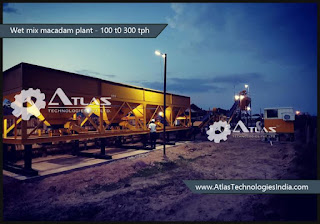What are the key advantages of using WMM produced at Atlas plants for road construction projects?

Here are a few key points about Atlas soil stabilization plants and Wet Mix Macadam (WMM) for road construction projects: Atlas soil stabilization plants are specialized facilities used to produce WMM, a high-quality sub-base material for road construction. WMM provides a stable and durable foundation for roads. It is a crucial component of the road construction process, helping to ensure the long-term integrity and performance of the finished road. The WMM produced at Atlas plants is made by mixing crushed stone, sand, and a stabilizing agent like cement or bitumen. This creates a homogeneous, well-graded material that can be compacted effectively. Using WMM produced at Atlas plants helps road construction projects achieve a strong, consistent sub-base that can withstand heavy traffic loads and environmental stresses over time. The quality control and specialized equipment at Atlas plants allows for reliable, large-scale production of the WMM needed for major road infrastructure...



